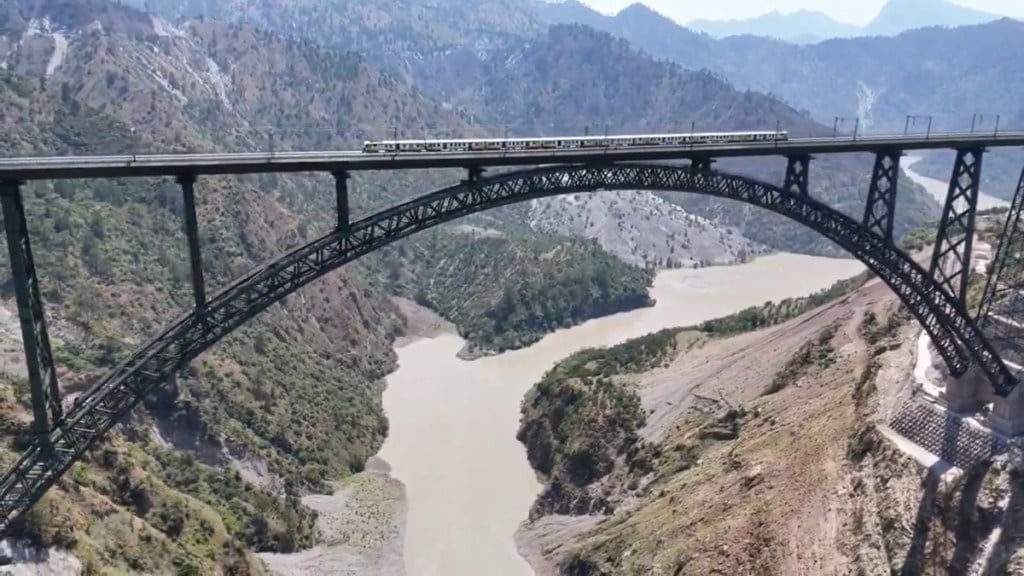The Indian Railways has marked a significant milestone as the first electric locomotive crossed the Anji Khad Cable Bridge in Jammu and Kashmir’s Reasi district. This event symbolises progress in the ambitious Udhampur-Srinagar-Baramulla Railway Link (USBRL) project, aimed at seamlessly connecting the Union Territory to the rest of India through a dedicated broad-gauge railway line.
Spanning 272 kilometres and costing Rs 37,000 crore, the USBRL project is a testament to engineering excellence, featuring 943 bridges, including the awe-inspiring Anji Khad Cable Bridge and the Chenab Bridge, the highest railway bridge in the world.
Chenab and Anji Khad Bridges
The Chenab Bridge built 359 meters above the riverbed, is a Rs 1,486 crore wonder. Stretching 1.32 kilometres, the structure is supported by two massive steel arches and requires a unique 915-meter cable crane for transporting heavy materials. Construction spanned over a decade, with 2,200 workers braving the Himalayan challenges to bring this dream to life.
The Anji Khad Cable Bridge, connecting Katra and Reasi stations, features a single 193-meter pylon standing at 331 meters above the riverbed, supported by 96 cables. This marvel was completed over seven years by 400 local workers, offering a direct connection between tunnels on the Katra-Banihal section.
Tunneling Through Challenges
The USBRL project involves 38 tunnels stretching a combined length of 119 kilometres. Among these, the Sumber-Arpinchala Tunnel (T-49), spanning 12.75 kilometres, is the longest transportation tunnel in India, while the Pir Panjal Tunnel (T-80) follows closely at 11.2 kilometres. These tunnels were constructed amidst Himalayan geology and deep gorges, representing the most challenging segment of the project.
Electrification and Milestones
Significant progress has been made in electrification. The 136-kilometer Banihal-Baramulla section is now fully electrified, and ballast-less tracks have been installed in the 3.2-kilometer T-33 tunnel near Shri Mata Vaishno Devi Shrine. Earlier phases of the USBRL project include commissioning the Jammu-Udhampur section in 2005, Quazigund-Baramulla by 2009, Banihal-Quazigund in 2013, and Udhampur-Katra in 2014.
The Northern Railways spearheaded this monumental project with support from Konkan Railways and international expertise from Finland, Italy, Germany, and other nations. Technical assistance was also provided by premier Indian institutes like IIT Roorkee, IIT Delhi, and IISc-Bengaluru.
Economic and Strategic Significance
Beyond the engineering feats, the USBRL project serves a strategic purpose: it provides a reliable, all-weather transportation system to boost tourism, aid troop movements, and enhance economic growth in Jammu and Kashmir. It promises to connect locals and tourists alike, fostering cultural and economic exchanges.
With the final gaps bridged, the USBRL project is nearing completion. Prime Minister Narendra Modi is expected to inaugurate the entire rail line this year, marking the culmination of over two decades of relentless effort.
As trains roll across the mighty Chenab and Anji Khad bridges, this project not only redefines India’s railway capabilities but also stands as a testament to the country’s vision of inclusive development and connectivity.

